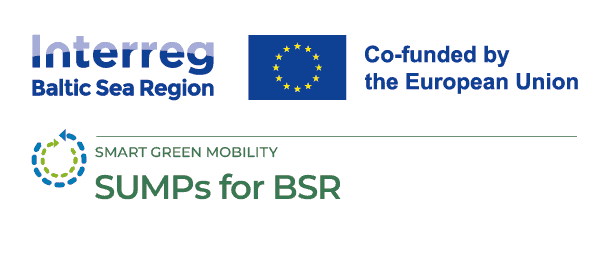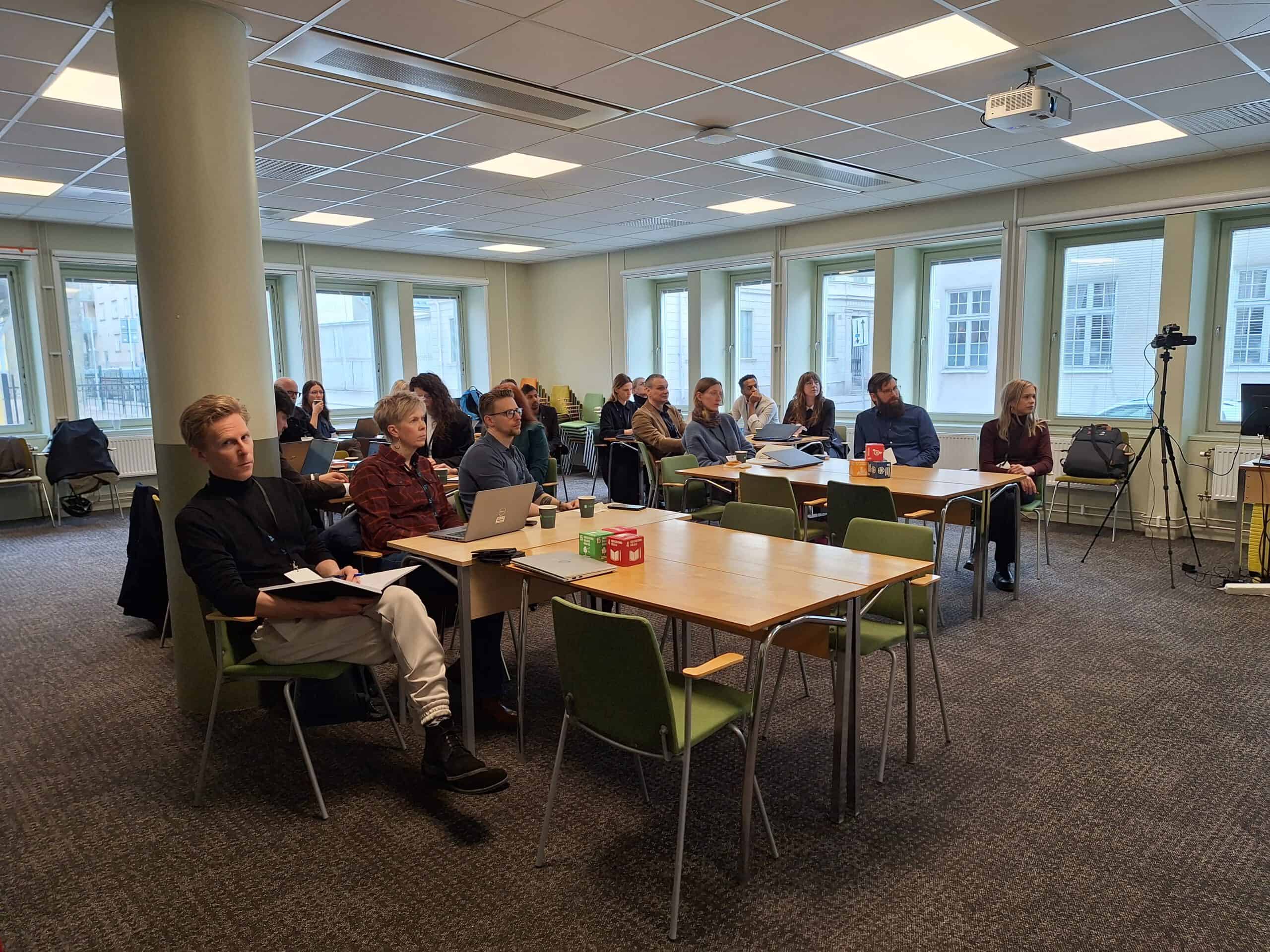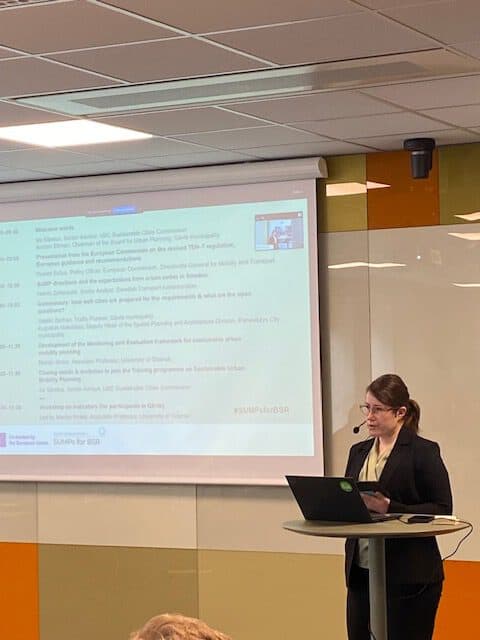
Revised TEN-T regulation strengthening the role of SUMP – how are cities prepared?
16 April 2025
On 18 March, the SUMPs for BSR project organised a hybrid event titled “The Changing Landscape of Sustainable Urban Mobility Planning” in Gävle, Sweden. The event explored the implications of the recently revised TEN-T regulation for the cities and their functional urban areas, particularly those listed as urban nodes.
The event opened with remarks from Anders Ekman, a local politician actively engaged in mobility issues in Gävle. He shared experiences of the city working towards reaching the ambitious climate goals, emphasising the importance of influencing the travel choices made by citizens. Like in many other cities, in Gävle, transport emissions and car dependency remain the key barriers to reaching climate goals.
Setting the stage, Robert Szucs from the European Commission, Directorate-General for Mobility and Transport, delivered the first keynote presentation. He outlined the revised TEN-T regulation, European guidance and recommendations, highlighting the requirements for the member states and the urban nodes, as well as their timelines. By 2027, urban nodes will have the responsibility to adopt and monitor a Sustainable Urban Mobility Plan (SUMP) that covers the functional urban area. These efforts are to be supported by the member states through the National SUMP Support Programs. Szucs also provided insights into the development of indicators and data that member states will have to disclose to the Commission, as well as the importance of collaboration on the functional urban area (FUA) level.
Representing the national perspective and the SUMP contact point, Henrik Zetterquist of the Swedish Transport Administration shared Sweden’s long-standing experience, since 2005, working with traffic strategies similar to SUMPs, aiming to bridge the gap between the strategic approach and the more concrete phases. He noted that the Swedish Transport Administration has been supporting cities in their traffic planning already before the TEN-T regulation, and the Swedish cities have seen the benefits of the strategic approach. However, he also pointed out the challenges related to the territorial aspect and the different levels of governance. There is a need to find new, more effective ways of collaborating at the regional level. He called for strengthening the collaboration with the cities, not only the urban nodes, creating the support program to the full extent, as well as keeping in mind the broader, integrated planning approach. Zetterquist highlighted an approach called Triple Access Planning, which focuses not only on the infrastructure but also on accessibility, including spatial planning and digital solutions. As the key takeaway, he encouraged cities to discover their own path. “There’s no one solution that fits all”, — cities and regions need to see the value of doing a SUMP and implementing it within their unique contexts.
Following the EU and national level perspectives, representatives of two urban nodes shared their local perspectives and experiences on how well they are prepared for the requirements. Vasiliki Zachari, mobility planner from Gävle, introduced the city’s approach to updating its existing traffic strategy in line with the new TEN-T requirements. She talked about the alignment of different municipal strategies and the need for improvement in monitoring the established indicators. Despite the fact that Gävle, a gradually growing city of 104,000 inhabitants, still has a heavy dependency on private cars, the development of sustainable mobility is challenged by the current economic situation. Zachari stressed the value of transnational projects for testing things, like soft measures promoting active mobility, and developing local practices. Supporting the previous speaker’s remarks, Zachari called for more effective cooperation among the governance levels, as well as support for clarifying the definition and boundaries of the FUA.
Augustas Makrickas, the deputy chief architect of Panevėžys, Lithuania, presented the city’s preparations for the revised TEN-T regulation. He highlighted the value of the TEN-T network and related major infrastructure developments, like Rail Baltica, for enhancing the regional connectivity for Lithuania. The revised regulation strengthens the regional aspect and focuses on urban mobility, supporting the efforts of the Lithuanian urban nodes. Panevėžys is getting prepared for enhancing inter-municipal collaboration and data collection, expanding the monitoring to the FUA level, and integrating with the Rail Baltica network. These are connected to the key challenges for Panevėžys, accomplishing the FUA SUMP, as well as ensuring the continuity in infrastructure development. However, backing the previous speaker up, he sees a clear need for soft measures in addition to the hard infrastructure developments.
The event concluded with a presentation by associate professor Marcin Wolek from the University of Gdansk, who shared the progress from the SUMPs for BSR developing a common monitoring and evaluation framework for SUMP. He highlighted that the Modal Split remain the holy grail for monitoring, yet the calculation and methods vary from city to city. For smaller cities with limited resources, he recommended starting with small steps, such as calculating the modal split for specific sectors or areas of the city. He underscored the importance of considering monitoring from the beginning of the SUMP process – analysing the baseline, setting targets and indicators.
Based on the results of the SUMPs for BSR project’s local indicator workshops, Wolek brought up the untapped opportunities, such as new stakeholder engagement, tools for data collection, digital development, and integration of sustainable mobility in urban development initiatives. He also noted the value of ”a little nudging from the European Commission” to encourage progress. The presentation was followed by a facilitated discussion about the urban mobility indicators cities are using. The key takeaways and insights gathered will contribute to finalising the monitoring and evaluation framework, especially targeted at the needs of small and medium-sized cities.








